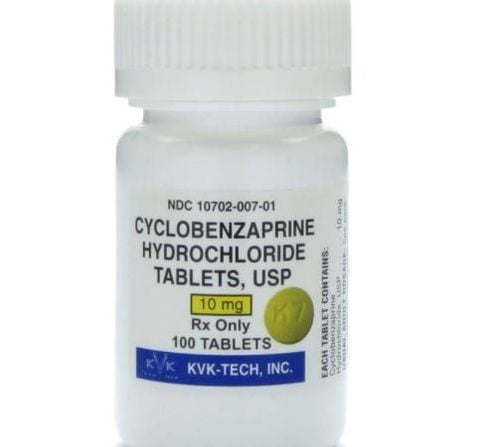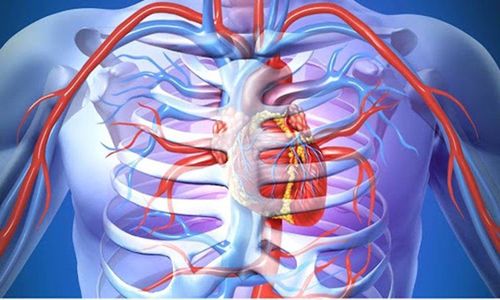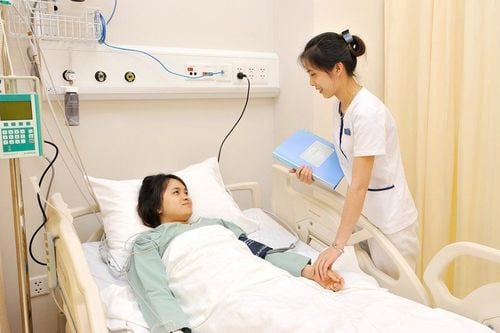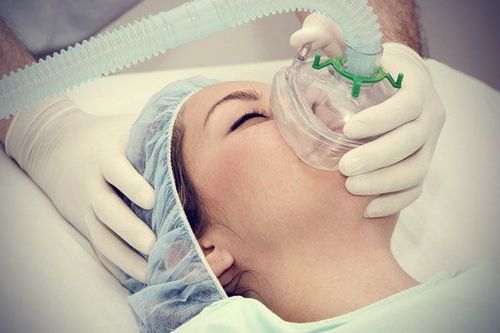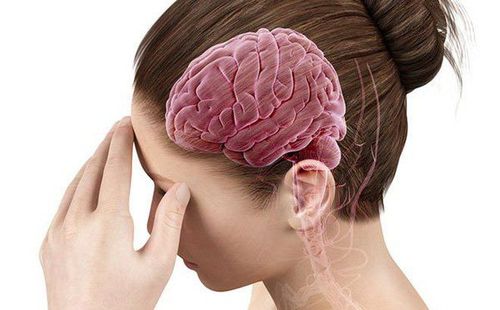This is an automatically translated article.
The article was written by Master, Specialist Doctor I Nguyen Thi Thanh Binh - Rehabilitation Doctor - Department of General Surgery - Vinmec Danang International General Hospital.Early intervention to restore function after surgery greatly contributes to helping patients avoid the above complications, and at the same time helps them to recover their respiratory and motor functions well, and soon achieve the maximum degree of functional independence. in activities of daily living.
3. Applied physiotherapy techniques:
3.1. Breathing exercises: These exercises should be limited to 5 minutes at first and gradually increased to 30 minutes. Patients should be encouraged to increase the frequency of exercises themselves until they have completely changed their respiratory pattern.Exercise 1: Diaphragm breathing in supine position
Posture: Lie on your back with your head about 150 lower than your torso. Directions: Place the left hand on the ribcage just below the sternum to limit thoracic mobility and thus force abdominal breathing. The right hand is placed on the abdomen in the navel area. The patient breathes in through the nose, pushing and inflating the abdominal muscles outward, and then exhaling through the mouth, pulling in and contracting the abdominal muscles. Pay more attention to the exhalation cycle than the inhalation. Exercise 2: Diaphragmatic breathing in a sitting position
Posture: Sit, lean slightly in a position of complete relaxation. Instructions: As in exercise 1. Exercise 3: Diaphragmatic breathing in standing position
Posture: Standing relaxed Instructions: As in exercise 1. Exercise 4: Diaphragmatic breathing while walking
Posture: Walking set. Directions: As in Exercise 1, try to synchronize your steps with your breathing. Exercise 5: Diaphragm breathing when going up the stairs
Posture: Step up or up the stairs. Instructions: As in exercise 4. Once the patient has controlled the required respiratory pattern, the exhalation phase can be gradually increased by candle and bottle blowing techniques.
Exercise 6: Candle blowing exercise
Use a lit candle and place it at increasing distances. Candles are placed at the level of the patient's mouth. The patient is in a sitting position and is asked to blow out the candle. The exercise is repeated with a standing position.
Exercise 7: Bottle blowing exercise
Using two half-gallon bottles, fill them halfway with water and connect them with plastic and glass pipes as shown in the figure. The patient is in a sitting position and asked to blow water from one vessel to the other with a breathing pattern as in blowing out a candle. The exercise is repeated in a standing position.

3.2. Seven basic exercises before thoracic surgery. Exercise 1: Stabilize the correct lying position
Posture: Lie on your back. Directions: The patient is asked to keep the pelvis horizontal, avoid any rotation or elevation of one hip, and then keep the shoulders horizontal (keep the shoulders parallel to the pelvis). Purpose: Feel the correct lying position. Exercise 2: Diaphragm breathing
Posture: Lie on your back with your shoulders and pelvis horizontal, your head in a neutral position. Directions: The patient places his left hand on his chest and his right hand on his abdomen and is offered abdominal breathing (diaphragmatic breathing); The right hand moves with each inhalation and exhalation. Do not move your chest or left hand. Purpose: Avoid chest breathing as much as possible. Exercise 3: Create a cough reflex and practice diaphragmatic breathing on the surgical side (Figure 13)
Position: Lying on your back. Directions: The patient tilts the body to the side to the nonoperative side and is asked for diaphragmatic breathing. Purpose: To promote operative lateral diaphragmatic mobility, thereby helping to prevent reversibility after thoracotomy, and to accelerate pulmonary expansion after pneumonectomy. At the same time, this exercise also induces the cough reflex; This is an important reflex to expel waste in the bronchi. Exercise 4: Strong neck extensors
Posture: Lie on your back with your pelvis and shoulders horizontal, head neutral. Directions: Lowering chin, patient presses head and neck back, counts to two, then relaxes to three. Repeat three times. Purpose: Strongly exercise the agonist and synergistic muscle group to extend the head and extend the cervical spine (Bundle on the trapezius muscle, knee length neck, etc. Exercise 5: Actively tilt the head to the surgical side
Posture: Lying position basic supine (use mirror for control) Directions: Move head to side and point to one side Slide head toward surgery and count to two, then return to starting position to three. Repeat three times Exercise 6: Active lowering and adduction of the shoulder blades
Position: Lying on your back Instructions: The therapist places the hand below the shoulder blade The patient is asked to press back, inward, and downward on the therapist's hand. Repeat this three times with three seconds of activity and three seconds of rest. Purpose: To teach the patient a special compound exercise. This exercise is needed after surgery to restore functioning of the muscles. The adductor and hypochondral muscles on the surgical side (the occipital, medial, and inferior trapezius, broad back) This exercise also works to stretch the pectoralis major, as it tends to be more resistant to Turn your shoulders forward Exercise 7: Active yes help lower the shoulder belt on the surgical side
Posture: Lie on your back (Use mirror to control). Directions: The patient flexes the forearm with the fingers resting on the shoulder. Arms close to body. KTV "fixes" the shoulder belt and elbow joint with his fingers. The patient pushes the arm downwards, stretches the shoulder capsule, ligaments and muscles, and holds in this position (shoulders should not be raised above midline) and counts to three. Repeat three times. Purpose: Stretches and strengthens the muscles of the shoulder girdle (wide back, lower trapezius, pectoralis major) and thus prevents “high shoulders” after surgery.
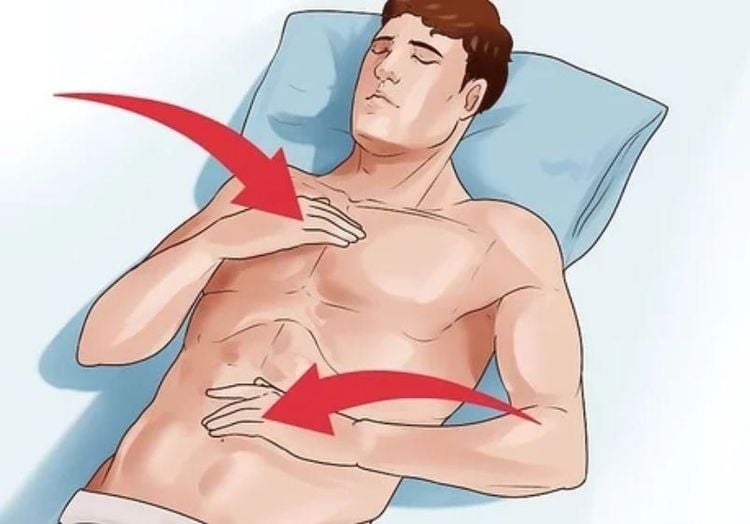
3.3. Exercises in the postoperative period. Start with the seven basic exercises that were done before surgery and continue with the following eleven exercises:
Exercise 1: Actively assisted arm extension at the shoulder joint (surgery side)
Posture : Lie on your back with your arm close to your body with your elbow flexed. Instructions: The therapist supports the hand in the elbow and hand areas. The patient is encouraged to extend the arm without overstretching with the assistance of the therapist. Repeat three times with a three-second break. Purpose: To ensure maximum shoulder spread movement to prevent joint “freeze” and muscle atrophy. Exercise 2: Actively assisted rotation of the shoulder joint
Posture: Lie on your back with the arms starting position as in exercise 8 Instructions: The patient is motivated to perform the exercise to the extent possible. tolerable with KTV support. Repeat three times with a three-second break. Purpose: Same as in range motion - to ensure maximum joint mobility and to promote rehabilitation of the muscles of the shoulder joint. Exercise 3: Actively assisted flexion and extension of the arm (surgical side)
Position: Lie on your back with arms flexed at elbows and spread to 900 degrees if possible; if not then dang as much as possible. Directions: The therapist supports the arm as in exercises 8 and 9. The flexed arm is brought in and tries to touch the contralateral shoulder with the fingers. The frequency and duration of rest is the same as the previous exercise.
Purpose: To stretch adhesions after surgery and to exercise the adductor scapulas and extensors of the arm in a horizontal position. Exercise 4: Active self-help folding both arms
Posture: Lying on your back. Directions: Patient holds hands together with arms extended and resting on torso. The patient is asked to slowly raise the arms above the head to the point that it is tolerable. This score can be very limited due to pain in the early days after surgery. Repeat three times and rest as usual. Purpose: To move the shoulder joint and exercise the shoulder girdle and arm muscles. In this exercise as in other exercises, it is essential to watch out for alternative movements such as scapula elevation and anterior rotation of the shoulder joint; and respect the normal physiological movements of the joints.
During the first period after surgery, routine exercises are performed regularly in the lying position for the first week. Beginning the second week after surgery, if the patient's condition permits, they can be seated facing a standing mirror, and the routine rehabilitation program is continued with the following exercises:
Exercise 5: Actively tilt head to one side
Posture: Patient sits with pelvis, shoulders, and head in neutral position. Directions: The patient tilts the head toward the surgical side, trying to touch the ear to the shoulder and avoid turning the head. Hold for two seconds, return to the original position and rest for three seconds. Repeat the movement three times. Purpose: Strengthen the neck flexors on the surgical side and stretch the contralateral neck flexors. Exercise 6: Actively rotate both shoulders
Posture: Patient sits with elbows flexed, arms by torso and fingertips touching shoulders. Directions: The patient flexes the arms forward and up until they are at right angles to the torso. Extend your arms and return to the starting position. Rest and then repeat the movement three times. If the patient finds this exercise difficult to perform, limit this exercise only to the surgical side. Purpose: Keep the shoulder joint flexible and stretch the soft tissues that are adherent. Exercise 7: Horizontal and horizontal arms
Posture: Patient sits, hands clasped together and placed behind neck, arms outstretched to the sides. Directions: Patient crosses arms until elbows touch in front of torso, then returns to starting position. Rest and repeat three times. Purpose: Stretches adherent soft tissues after surgery and exercises the scapula musculature.
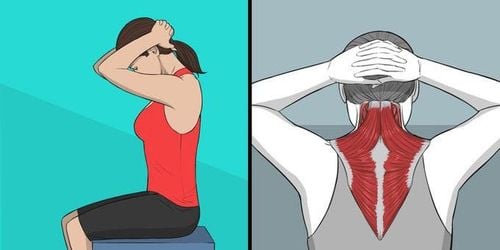
Exercise 8: Apply and lower the shoulder blades
Posture: The patient sits with his hands clasped together and placed on the navel. Hold the arms by the sides of the torso and lower the shoulder joints. Directions: The patient is asked to bring the shoulder blades together by contracting the adductor muscles. Rest and repeat three times. Purpose: To strengthen the adductor shoulder muscle group and stretch the chest muscles. Exercise 9: Bend and stretch the torso
Posture: The patient sits with his back straight, arms hanging by his side, knees touching. Directions: The patient slowly bends forward until the head touches the knees and the hands touch the floor. Return to the old position. Rest and repeat three times. Purpose: Mobilize the spine and stretch the soft tissue adhesions. Exercise 10 : Actively assisted arm flexion
Posture: The patient is sitting in the basic position. Directions: Same as exercise 11 Purpose: Same as exercise 11. Exercise 11: Active exercise with resistance of pectoralis major
Position: Patient sits with arms at side of body, elbows 900 flexed and forearms supine. Instructions: The patient brings the arm back while the therapist creates resistance at the elbow joint. Return to original position. Rest and repeat three times. Since this is a difficult exercise for the patient, this exercise should only be used when the patient has achieved maximum muscle strength. Purpose: To develop the volume of the pectoralis minor to fill the postoperative void in the upper anterior portion of the thoracic wall. 3.4. Vibration/shake technique Vibration is a technique to dilute secretions to facilitate the expulsion of wastes. The vibrating/shaking technique is placed on the part of the lung that is being drained.
KTV places both hands on the chest wall or hands overlap. The patient breathes deeply. When the patient exhales completely, the therapist gently squeezes and shakes the chest wall by tensing the muscles of the shoulder and arm; Care should be taken not to move the skin over the ribs. Do not exhale too forcefully as this can cause wheezing.
Please dial HOTLINE for more information or register for an appointment HERE. Download MyVinmec app to make appointments faster and to manage your bookings easily.





